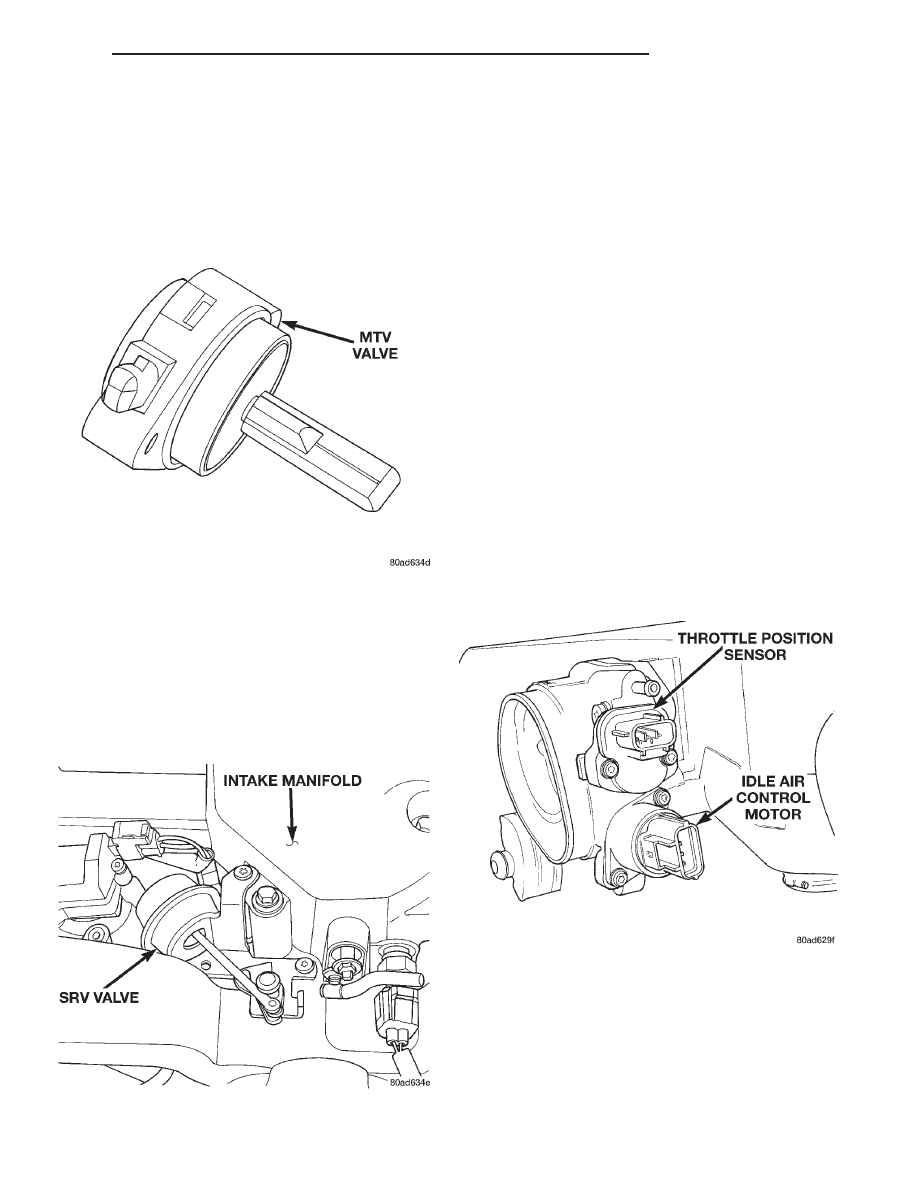Chrysler New Yorker. Manual - part 264

MANIFOLD TUNING VALVE (MTV)—PCM OUTPUT
The PCM controls the MTV solenoid. The manifold
tuning valve optimizes acoustical tuning of the
intake system during wide open throttle operation
throughout the RPM range. The valve opens a cross-
over passage in that connects both sides of the intake
manifold plenum (Fig. 22).
SHORT RUNNER VALVE (SRV)
The SRV system operates under WOT conditions
above 5000 rpm to maximize engine performance.
When actuated by the PCM, the SRV solenoid ener-
gizes, allowing mechanical linkage to redirect the
intake air flow to six short runners. The PCM looks
for a current spike when actuating the solenoid. If
the spike is not present, the PCM sets the DTC.
GENERATOR FIELD—PCM OUTPUT
The PCM regulates the charging system voltage
within a range of 12.9 to 15.0 volts. Refer to Group
8A for Battery system information and 8C for charg-
ing system information.
IDLE AIR CONTROL MOTOR—PCM OUTPUT
The idle air control motor attaches to the throttle
body (Fig. 24). The PCM operates the idle air control
motor. The PCM adjusts engine idle speed through
the idle air control motor to compensate for engine
load or ambient conditions.
The throttle body has an air bypass passage that
provides air for the engine at idle (the throttle blade
is closed). The idle air control motor pintle protrudes
into the air bypass passage and regulates air flow
through it.
The PCM adjusts engine idle speed by moving the
idle air control motor pintle in and out of the bypass
passage. The adjustments are based on inputs the
PCM receives. The inputs effecting idle speed include
the throttle position sensor, road speed (from Trans-
mission Control Module), coolant temperature sensor,
battery voltage and battery temperature. Also vari-
ous switch operations (brake, park/neutral, air condi-
tioning)
effect
idle
speed.
The
PCM
prevents
deceleration die out by increasing air flow when the
throttle closes quickly.
Fig. 22 Manifold Tuning Valve
Fig. 23 Short Runner Valve (SRV)
Fig. 24 Idle Air Control Motor
300M
FUEL SYSTEM
14 - 31
DESCRIPTION AND OPERATION (Continued)